
AegeeMembersManual
.pdf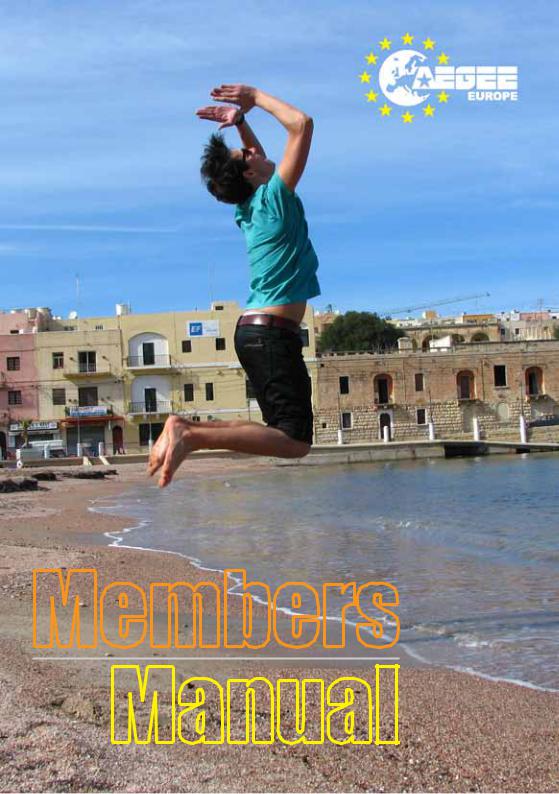
Members ‘09 Manual AEGEE

 PUBLISHER
PUBLISHER
Members’ |
|
AEGEE ‘09 |
Manual |
PUBLISHED BY
AEGEE-Europe Rue Nestor de Tière 15
1030 Brussels
Belgium
Phone: +32-2-245.23.00 Fax: +32-2-245.62.60 headoffice@aegee.org www.aegee.org
AEGEE-Europe’s Members’ Manual is published with financial support of the Youth in Action Programme of the European Commission and Council of Europe’s European Youth Foundation.
© AEGEE-Europe 2009
2 AEGEE-Europe ‘09
Members’ Manual

PREFACE |
Dear members of AEGEE,
It is a pleasure to present The AEGEE Members’ Manual 2009. This joint effort is pursuing to enlighten the way of the fresh AEGEE member in a more accessible and immediate way.
In this manual you will be able to find out what AEGEE is about, our influence on the outer world, but also how to run your local, to whom to refer to when applying for a grant, how to move your first steps on our IT systems…
Dear reader,
You are holding in your hand the Members’ Manual 2009 which will guide you through AEGEE. Ever wondered what abbreviations such as CD, SUCT and CoE stand for, why AEGEE has an Academy and a HRWG, how to run a local, what projects are currently running, and much more? This publication is the right place to get a first overview on all this. If you want to learn more about AEGEE, it is
However, as our organisation is not a washing machine that can be understood from a written manual, let me add a couple of personal tips about how to use AEGEE:
AEGEE inspires – use AEGEE to get motivation and enthusiasm
AEGEE unites – use AEGEE to get united beyond borders and prejudices
AEGEE enlightens – use AEGEE to find your right place in the world.
I wish you pleasant reading of the manual and powerful inspiring in AEGEE.
Tena Prelec
Human Resources and Network Director of
AEGEE-Europe 2008/2009
up to you to make the next step – contact the Network Commission or the CD, or simply ask more experienced members in your own local. They will all be happy to help you find your way to AEGEE. So do not hesitate to approach others, to become active in AEGEE, both at local level and European level. AEGEE’s future is up to you.
You can shape AEGEE!
Verena Schmidt
Editor in Chief of Members’ Manual 2009
AEGEE-Europe ‘09 |
3 |
Members’ Manual |

 ABBREVIATIONS
ABBREVIATIONS
abbreviations
Α - AEGEE
AC - Audit Commission AR - Activity Report BE - Beyond Europe
CAP - Corporate Affairs Project CD - Comité Directeur
CdA - Convention d’Adhésion CIA - Corpus Iuridicum AEGEEnse CST - Case Study Trip
CWG - Culture Working Group
DWG - Dance Working Group EBM - European Boards’ Meeting
EDL - European Day of Langu¬a¬ges EnWG - Environmental Working Group ES - European School
EWG - Education Working Group FATF - Foundation AEGEE Trust Fund FP - Flagship Project
FR - Fund Raising; Financial Report HRWG - Human Rights Working Group
IPWG - International Politics Working Group IT - Information Technology
ITWG - Information Technology Working Group JC - Juridical Commission
K2E - Key to Europe
LA - Liaison Agent/Agency; Les Anciens LO - Liaison Officer
LTC - Local Training Course MemCom - Members Commission NetCom - Network Commission NetCommie - Network Commissioner NWM - Network Meeting
PR - Public Relations
PRWG - Public Relations Working Group RTC – Regional Training Course
SU - Summer University
SUCT - Summer University Coordination Team SuFu - Sustaining our Future
VFWG - Visa Freedom Working Group WG - Working Group
YnY - YOUrope needs YOU! WDEE - Where does Europe End
4 |
AEGEE-Europe ‘09 |
Members’ Manual |

TABLE OF CONTENT |
content
|
|
|
|
|
|
|
|
03 |
|
Welcome words |
21 |
|
Strategic planning |
||
04 |
|
Abbreviations |
22 |
|
Projects |
||
05 |
|
Content |
28 |
|
Events |
||
06 |
|
AEGEE - the ABC |
29 |
|
Training events |
||
07 |
|
Statement of Principles |
32 |
|
Antenna criteria |
||
08 |
|
History |
33 |
|
Creating an Antenna |
||
10 |
|
Logo |
35 |
|
Antenna management |
||
11 |
|
Members |
37 |
|
Specific tasks |
||
12 |
|
Statutory meetings |
40 |
|
Event management |
||
15 |
|
Comité Directeur |
43 |
|
IT |
||
16 |
|
Commissions |
46 |
|
External cooperation |
||
17 |
|
Working Groups |
48 |
|
External trainings |
||
19 |
|
Main fields of action |
49 |
|
Impressum |
||
20 |
|
Publications |
|
|
|
|
|
|
|
|
|
|
|
|
|
AEGEE-Europe ‘09 |
5 |
Members’ Manual |
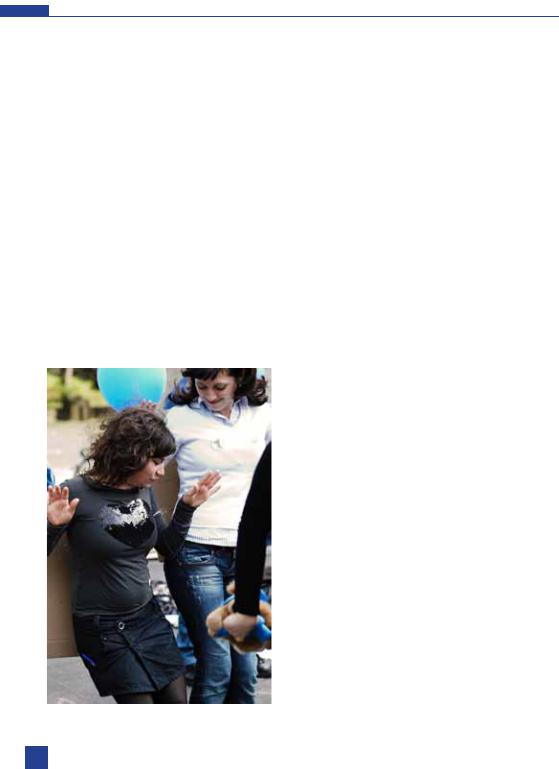
AEGEE - THE ABC |
AEGEE - the abc
What does it mean?
AEGEE stands for Association des Etats Généraux des Etudiants de l’Europe.
Is it also sometimes referred to as the European Students’ Forum
The main steps
-AEGEE was founded in 1985 in Paris
-AEGEE has lobbied for the initiation of ERASMUS programme in 1987 in Paris
-AEGEE is the biggest interdisciplinary students’ association in Europe
The structure and the people
-Today AEGEE has approximately 15.000 members in currently 224 local groups spread all over Europe in 43 countries
-AEGEE’s main pillars are Active Citizenship, Peace and Stability, Higher Education and Cultural Exchange
-AEGEE does not have a national level in its structure. Our members work at local level, directly implementing AEGEE aims in a way that serves best the needs of their local community, and at European level, which gives the great common frame and direction for all local activities and provides a platform for international cooperation on cross border initiatives.
The beliefs
-AEGEE aims to promote European co-oper- ation and integration among young people, especially those in the student world
-AEGEE is a secular, non-profit, financially and ideologically independent organisation
-AEGEE is not linked to any political party, but it carries out pro-European projects with an aim - European integration - that have direct influence on European policies.
The activities
-AEGEE has six Focus Areas: three Thematical and three Organisational
-AEGEE members organise and participate in a wide range of activities such as conferences, seminars, exchanges, training courses, case study trips and street actions, as well as various other types of meetings and the well known Summer Universities
-AEGEE members from local level can get directly involved in the European Working Groups, Project Teams and Commissions.
6 |
AEGEE-Europe ‘09 |
Members’ Manual |
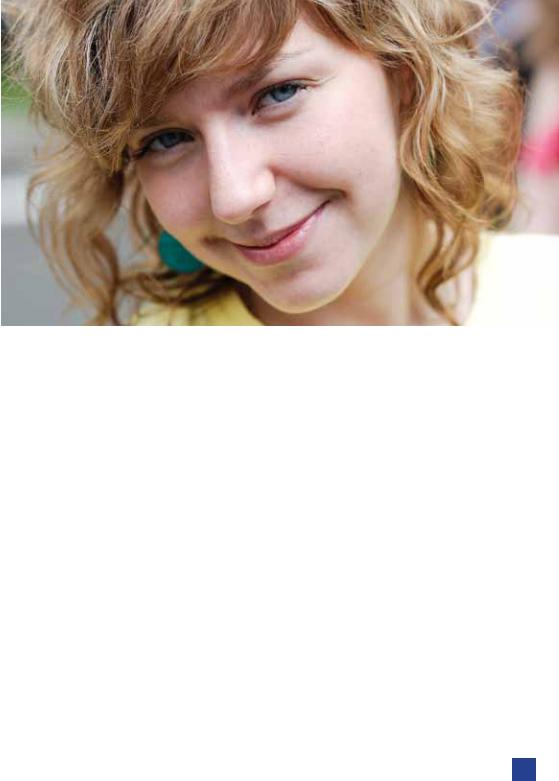
statement of principles
During the Agora in Utrecht (May 2000), the following Statement of Principles has been accepted:
We, the members of AEGEE,
Realising that the European youth is building the future of our continent,
Aspiring to a peaceful Europe free of obstacles and enmities, of false divisions and forced differences,
Resolved to remove barriers between the peoples of Europe,
Determined to contribute to a Europe of cooperation and understanding,
Creating a network of young Europeans desiring to spread our ideals and ideas concerning Europe,
Hereby declare
Our belief that, while cherishing our diversity and respecting the character of our regions, we can find on the basis of our cultural and historical heritage the principles that unite us and guide us in our effort to strengthen the European conscience,
Our faith in a Europe symbolising liberty, democracy, and respect for human rights and the rule of law, and our will to co-operate with institutions that promote these concepts,
Our resolve to establish an open Europe which recognises the importance of all cultures in the shaping of its past, present, and future and which plays an active role in fostering peace, stability and prosperity throughout the world,
Our intention to promote unlimited access to education as being of fundamental importance to increase mutual understanding,
Our desire to encourage student mobility in order to fight prejudice and xenophobia by increasing people’s awareness of different cultures, and
Our strong belief that our association is a unique platform enabling us to contribute to these visions of Europe.
AEGEE-Europe ‘09 |
7 |
Members’ Manual |
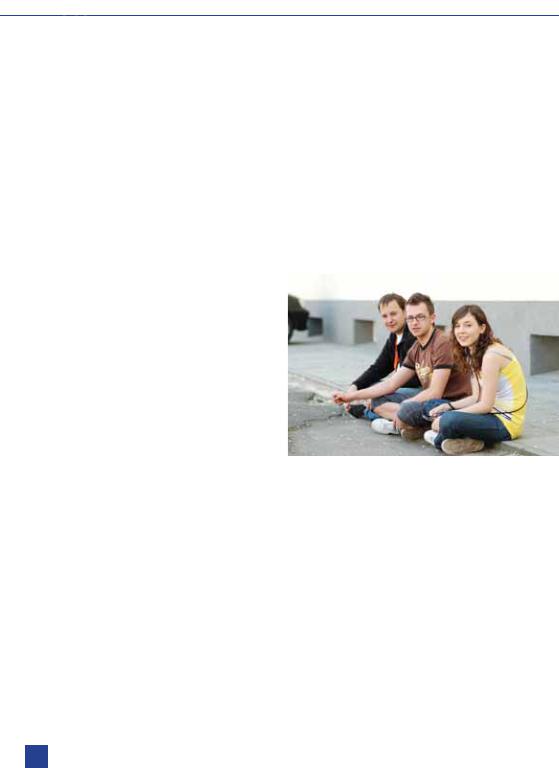

 HISTORY
HISTORY
history in a nutshell
The name EGEE is related to the Aegean Sea where democracy was created 2,000 years ago. Due to a name collision with a French company, the name (of EGEE) was changed to AEGEE in 1988. AEGEE’s birthday was 16 August 1985, when a huge conference called EGEE was opened in Paris, aiming at overcoming the ongoing Eurosclerosis. The whole process was led by Franck Biancheri and soon all involved students wanted to turn the EGEE conference into an organisation being the platform for young Europeans.
Development of AEGEE’s organisational structure
During the first years, AEGEE was focusing on establishing a well-functioning organisational structure. The first Agora took place in Munich in 1986, creating the structure of the association: Agora, Presidents’ Meeting (now EBM), CD and WGs.
In 1987, the first statutes (CIA) were drafted. The current logo was introduced in 1990 during Agora Bonn. The same year, further changes were introduced, such as the chairperson, the Audit and Juridical Commission and Network Meetings.
The number of CD members was reduced in 1989 from 20 to 16 full members. In 1996 the CD was further reduced to nine and in 2007 to seven members.
Another major change happened in 1991, when the election system was changed so that CD members are elected separately and not as a team. Between 1993 and 2001 not a single president stayed in the office for more than six months.
In the late ‘90ies, AEGEE introduced its main fields of action as well as the strategy plan. Communication proved to be a challenge as
it happened mainly via snail mail as emails and Internet were not common yet, personal meetings happened rarely. The communication within the CD improved in 1996, when CD members were obliged to move to Delft to spend most of their time in the office. After several moves to and in Brussels, the CD now lives in Schaarbeek, a suburb of Brussels.
In 1996, the Network Commission was introduced. In 2007, latest major changes touched the CD cycle and the strategic plan. The latter one contains so-called focus areas, which are defined for a three-year period. Further implemented is the action agenda, defining AEGEE’s activities for a one-year period in the framework of the focus areas.
Activities
In its first years, AEGEE already saw its biggest political achievements such as the implementation of Erasmus after a dinner with Francois Mitterandon 15 March 1987 and in the following years projects like Euromanager, Europolice, Moot Court, Euro State and the SU Project took place. In 1993, AEGEE did its first Case Study Trip to Albania to explore the young Europeans’daily life in the country. Later, there were further CSTs, to Ukraine, former Yugoslavia, Moldavia and Caucasus.
The idea of a Year Plan was introduced in 1993, including all basic ideas of AEGEE into a common goal that everybody could work together for.
8 |
AEGEE-Europe ‘09 |
Members’ Manual |
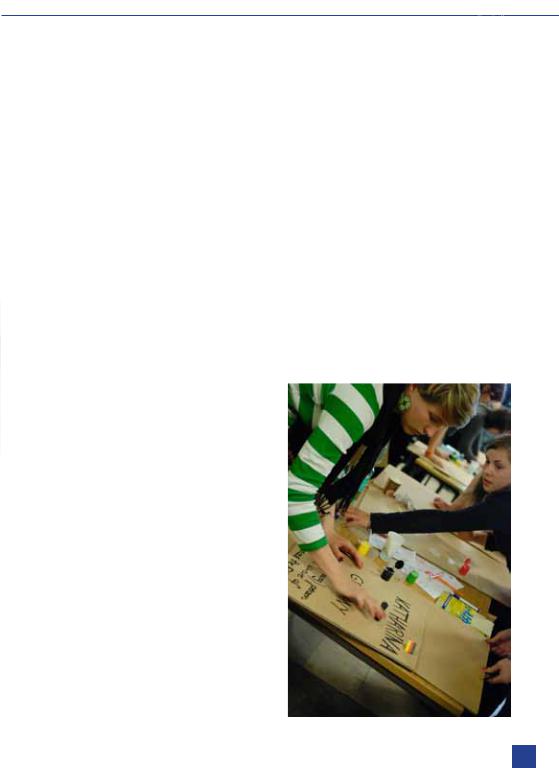
HISTORY 
In Brussels, being closer to the European institutions, the European board was able to focus on European-wide thematic projects with 10-20 congresses, seminars and other actions: Find your way to and within an open society (1996), Europe and Euro (1997), Peace Academy (1999). Also, Day of Europe and the Socrates Action Day were developed, where 50 or more locals did actions on the same day.
Thematically, AEGEE continued the strong focus on South East Europe. In 2000, new projects were born, such as Education for Democracy.
The most traditional pillar of AEGEE’s activities, higher education, got again stronger in the focus. Especially the Bologna process and its effects on the students in Europe were analysed with projects such as Bologna-Prague- Berlin. Further big projects took place in 2003 and 2004: Youth & Globalisation which gathered African and European students towards a World Youth Summit, and the Turkish-Greek Civil Dialogue aiming to build a closer mutual understanding between Turkish and Greek youth. In 2005, AEGEE took a firm stand in democracy, launching the Flagship project Take Control – ways to Democracy in Europe.
With the flagship project Education Unlimited, AEGEE put the focus again back to its pillar of higher education. Recent projects are YOUrope needs YOU!, Y Vote 2009 and the Flagship Project Sustaining our Future” in 2008/09.
Network Development
After the EGEE conference, the association soon was not only present in Paris, but also Leiden, London, Madrid, Milan and Munich. In 1988, AEGEE already counted 40 Antennae. After the Berlin Wall crumbled in 1989, AE- GEE-Leipzig was the first local founded in the East. One year later, in Autumn Agora Bonn in November 1990, the delegates approved opening up to the USSR. AEGEE also started to extend to Northern Europe. In 1990, the
first local was established in Finland (AEGEETurku/Abo).
Major AEGEE-events took place in Central Eastern Europe: Agorae in Budapest (1991) and Praha (1993). In 1992, at the Agora in Kos, AEGEE-Istanbul joined the AEGEE network followed by Ankara in 1995. AEGEE became the first European students’ organisation to open up for Turkey.
In this time the strong network growth of the previous years continued – echoed by a new record of events: more than 90 SUs and more than 150 conferences, trainings and other events took place in 2001. The AEGEEnetwork reached the number of 256 local branches.
2003 the Caucasus joined AEGEE: first local branches were founded in Georgia and Azerbaijan.
Today AEGEE has 240 locals in 43 countries.
For more information about AEGEE’s history please check the Members’ Manual 2008.
AEGEE-Europe ‘09 |
9 |
Members’ Manual |
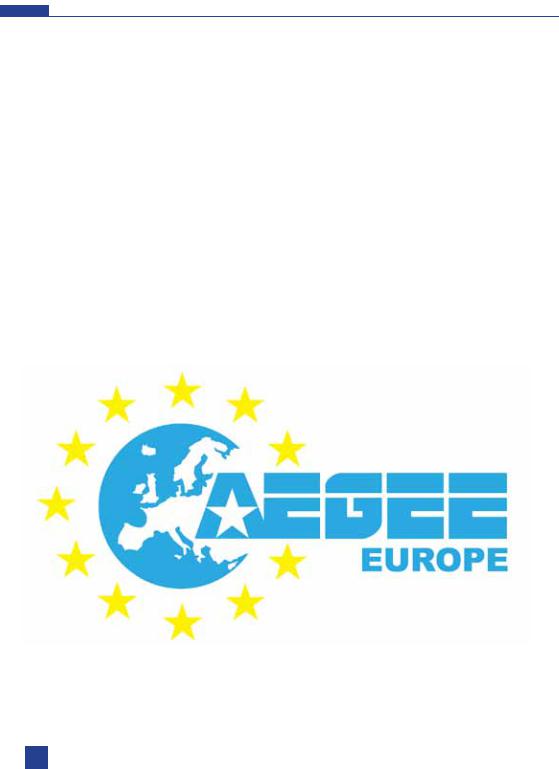
THE AEGEE LOGO |
the AEGEE logo
The AEGEE logo is part of our corporate identity and indicates our way of acting and thinking.
AEGEE is ’your Key to Europe’: that’s why the logo has the shape of a key. The circle with 12 starts represents unity and completeness, whereas the word ‘AEGEE’, breaking through the circle of stars, symbolizes the fact that in
the process of uniting Europe AEGEE aims to stay ahead by launching new, daring initiatives. Final touch, the map of Europe: AEGEE’s interests are directed to all countries of the continent.
AEGEE locals get the right to use the logo after signing the Convention d’Adhésion with AEGEE-Europe. The name of the city where the local is located replaces the word‘Europe’.
In February 2009 there was a new Logo proposal (in the frame of a new Corporate Identity) which resulted in big discussions and was eventually not presented for voting at the Agora.
10 AEGEE-Europe ‘09
Members’ Manual
